Black Mold, Water Intrusion, and the Importance of Prompt Remediation
2/20/2025 | 8 min read
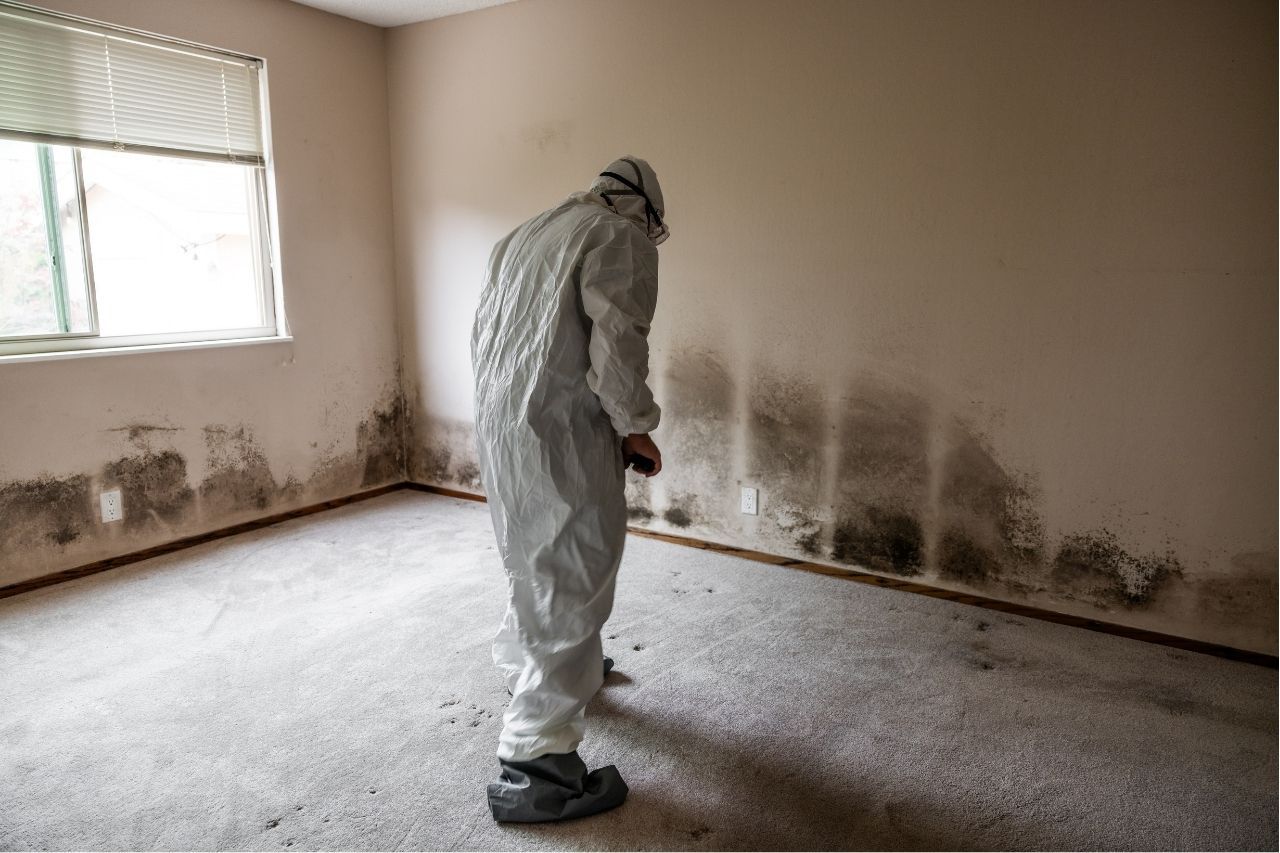
A Comprehensive Guide for Policyholders
By Pierre A. Louis, Esq. – Florida Property Damage Attorney
Table of Contents
1. Introduction 2. What Is Black Mold? A Scientific Overview 3. How and Why Mold Thrives: The Role of Water Intrusion
- 3.1 Hurricanes and Major Weather Events
- 3.2 Standard Roof Leaks and Minor Water Sources 4. Health Concerns: Myths vs. Realities of Black Mold Exposure 5. Legal and Insurance Framework
- 5.1 Typical Policy Provisions for Water Damage
- 5.2 Mold Coverage Endorsements and Exclusions
- 5.3 Policyholder Duties After a Loss
- 5.4 Common Insurer Defenses and Denials 6. Comparing Water Damage Restoration and Mold Remediation
- 6.1 Water Damage Restoration: Purpose and Process
- 6.2 Mold Remediation: Purpose and Process
- 6.3 Timing, Documentation, and Claim Implications 7. The Importance of Using a Licensed Mold Assessor in Florida 8. Practical Steps for Prevention and Rapid Response 9. Legal Strategies for Policyholders 10. Conclusion 11. References
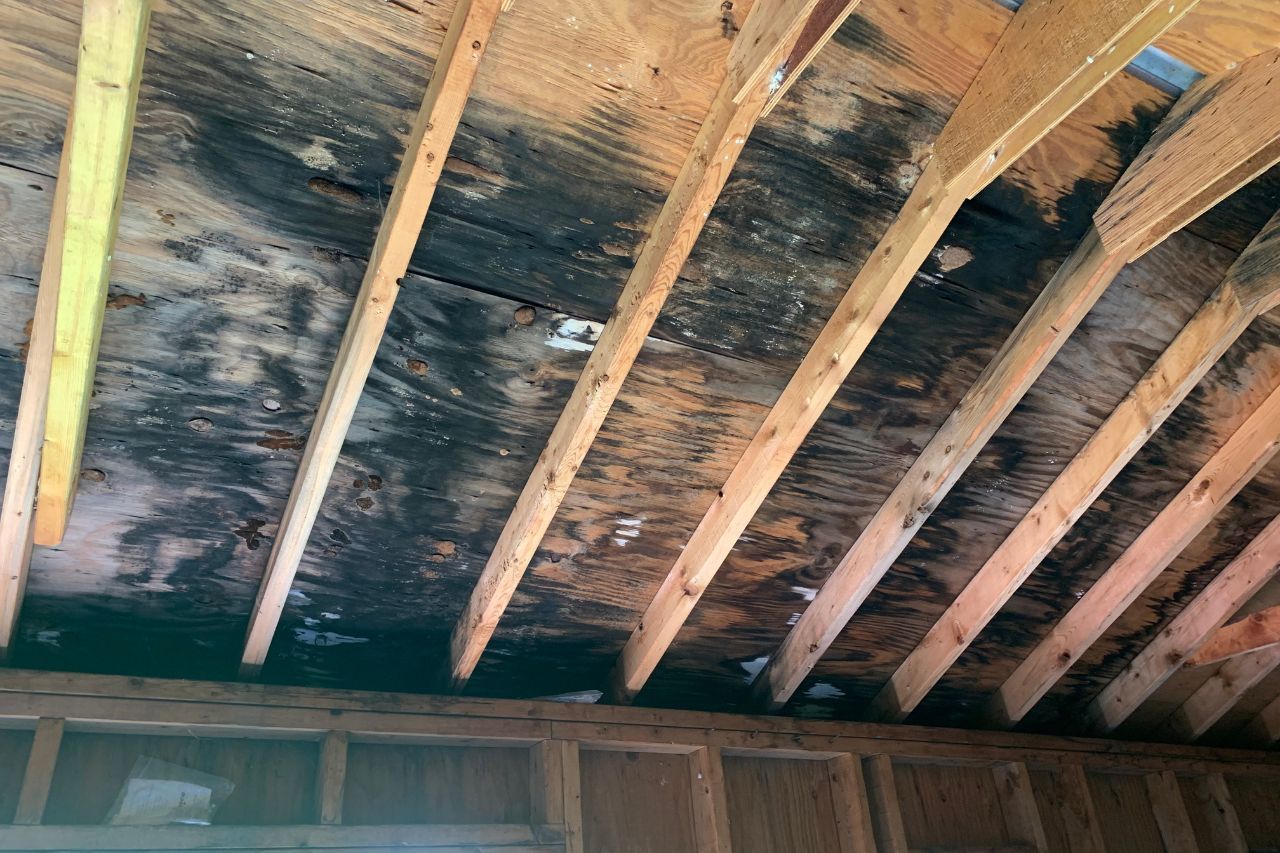
1. Introduction
Black mold is a persistent concern for homeowners, particularly in warm, humid environments like Florida. Although mold exists naturally in many indoor and outdoor settings, certain species—colloquially referred to as “black mold”—have developed a reputation for being uniquely hazardous. Whether resulting from a catastrophic hurricane or a minor leak in the attic, the spread of black mold can significantly affect both the structural integrity of a building and the health of its occupants.
From a legal standpoint, insurance coverage for mold remediation can be contentious. Policyholders frequently find themselves at odds with insurers who argue that mold damage either arises from excluded perils or falls under highly restrictive mold coverage endorsements. As a Florida property damage attorney, I have seen countless examples where prompt, informed action makes a world of difference in both health outcomes and the successful resolution of insurance claims.
This article provides a scientific and legal analysis of black mold: how it forms, its health implications, common sources of water intrusion (including hurricanes and roof leaks), and the importance of remediation. Drawing upon reputable medical sources such as the Cleveland Clinic and referencing Florida’s legal and regulatory environment, I will offer a step-by-step guide for policyholders who suspect mold growth or have experienced water damage.
2. What Is Black Mold? A Scientific Overview
Scientifically, mold belongs to the kingdom Fungi. Within this kingdom, different genera and species of molds can appear in a variety of colors—green, white, black, and more. The term “black mold” typically refers to the species Stachybotrys chartarum, but other dark-colored molds (e.g., Aspergillus niger) are often lumped under the same term. Stachybotrys chartarum usually manifests on materials high in cellulose, such as drywall, wood framing, paper products, or cardboard, especially in the presence of persistent moisture and warmth.
2.1 Growth Requirements
- Moisture: The most critical factor. Mold colonies flourish in environments with relative humidity above 60%, or where leaks and dampness persist.
- Nutrients (Cellulose Substrates): Drywall, untreated wood, and paper-based materials are prime targets.
- Optimal Temperature Range: Generally between 40°F and 100°F (4.4°C and 38°C).
- Time: Under ideal conditions, mold can form colonies within 24 to 48 hours.
Because Florida’s climate naturally provides warmth and humidity for much of the year, any additional source of water intrusion—be it from storms or plumbing leaks—creates a near-perfect environment for black mold to develop.
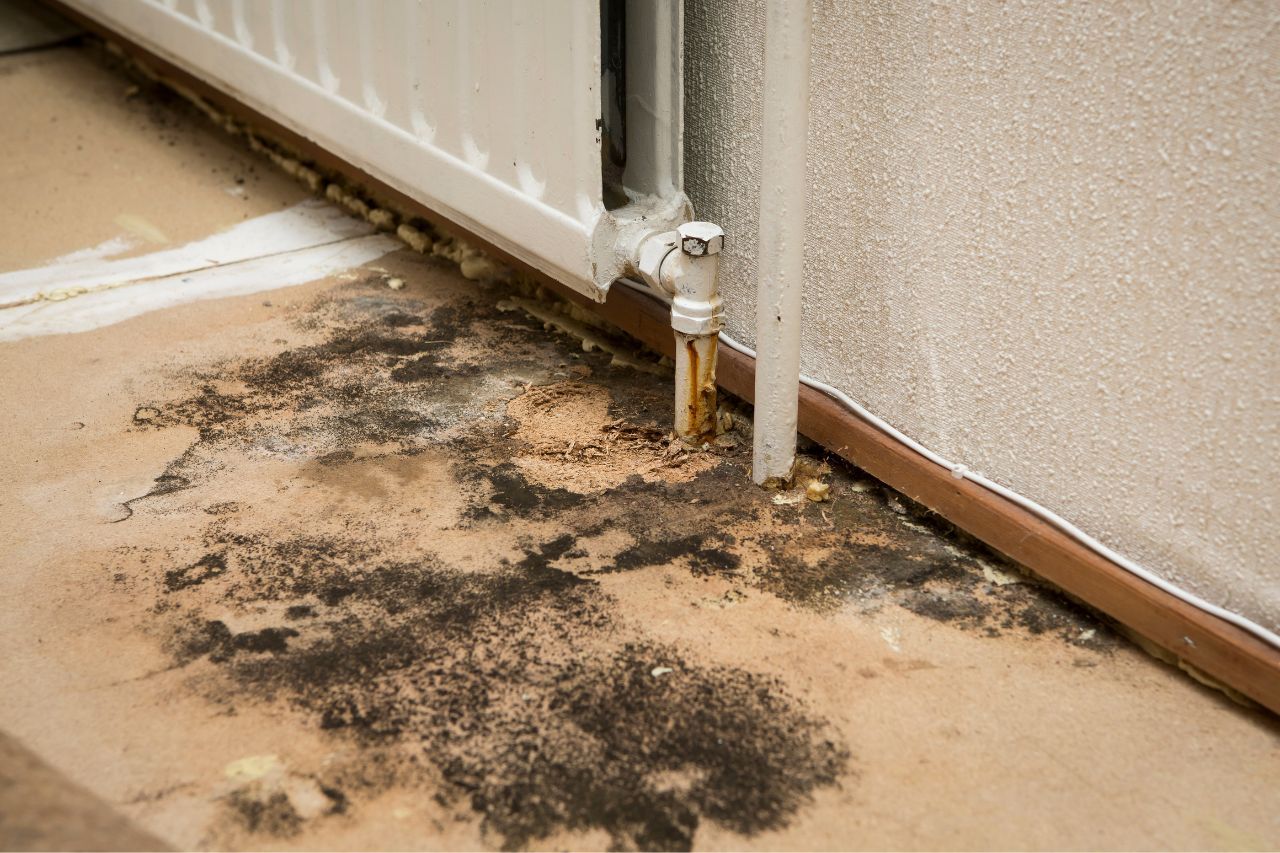
3. How and Why Mold Thrives: The Role of Water Intrusion
The key driver in any mold problem is moisture. While mold spores are ever-present in the environment, they remain largely benign if they lack sufficient moisture to germinate. Water intrusion from various sources escalates this risk, effectively giving mold the foothold it needs to proliferate.
3.1 Hurricanes and Major Weather Events
Florida is no stranger to severe weather. Hurricanes and tropical storms introduce heavy rain, powerful winds, and sometimes storm surge. When a hurricane strikes like Hurricane Milton for example—it can compromise roofing systems, tear off shingles, break windows, or cause structural damage leading to interior water leaks. The subsequent water penetration into attics, behind walls, and under flooring is a leading cause of mold growth. Even minor breaches from wind-driven rain can result in prolonged dampness if not addressed quickly.
From a scientific standpoint, these sudden inundations create a reservoir of moisture inside a building. Once building materials like drywall or insulation become saturated, they can remain damp for extended periods, allowing mold spores to thrive. In Florida’s humid climate, thorough drying can be challenging without professional-grade dehumidifiers and drying equipment. Consequently, post-hurricane mold is an especially common and costly issue.
3.2 Standard Roof Leaks and Minor Water Sources
Black mold infestations are not limited to large-scale disasters. A small, steady roof leak or a minor plumbing drip in the attic can similarly create hidden pockets of moisture. Because these leaks often go unnoticed for weeks or months, mold has ample time to develop behind walls or under insulation. By the time a homeowner notices a musty odor or spots discoloration on the ceiling, significant mold colonization may have already occurred.
Even less dramatic sources—such as poorly ventilated bathrooms or condensation around HVAC ducts—can lead to localized dampness. Over time, this dampness can enable mold growth that can spread into adjacent areas. Any scenario where humidity and moisture levels are elevated above typical indoor standards carries a risk of mold formation.
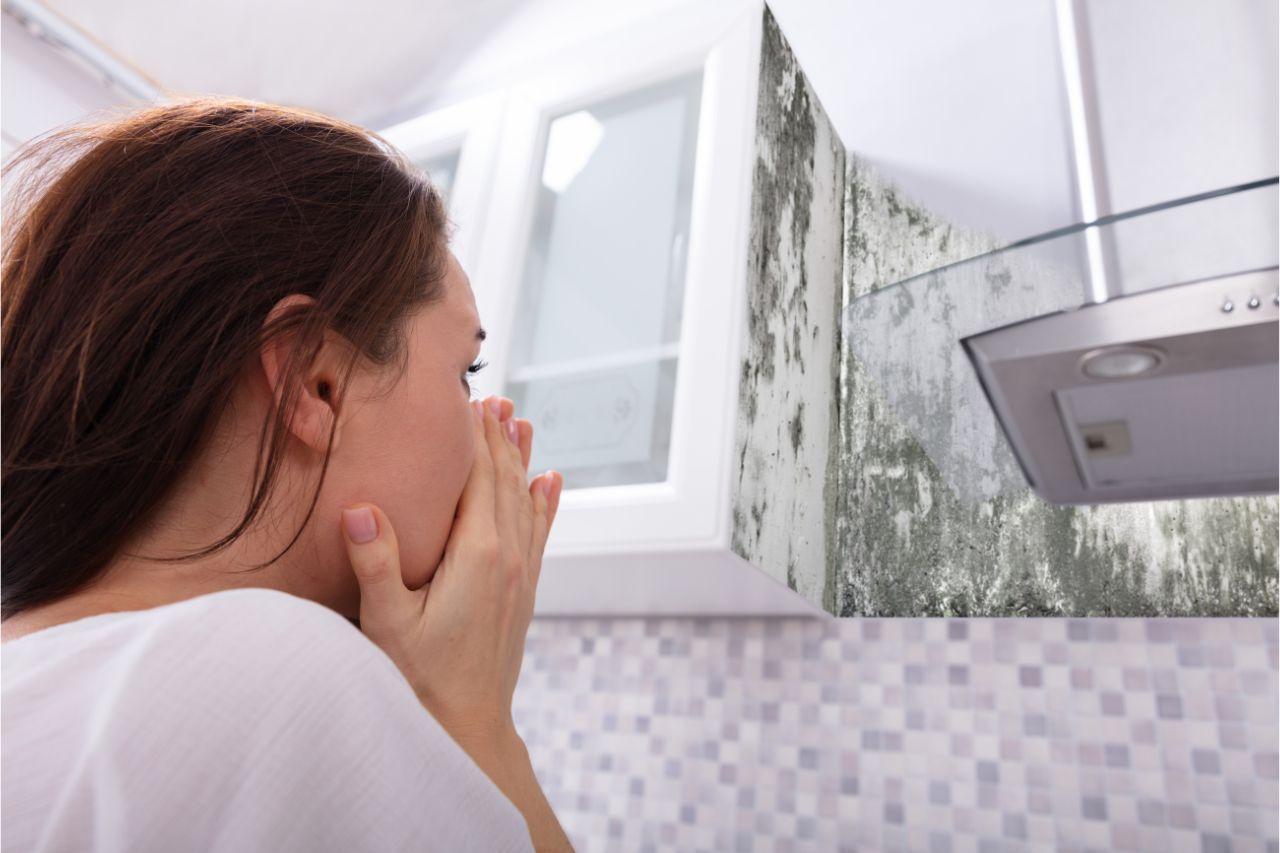
4. Health Concerns: Myths vs. Realities of Black Mold Exposure
Black mold is sometimes called “toxic mold,” which can be misleading. While it is true that certain molds can produce mycotoxins, the severity of health impacts varies widely among individuals. The Cleveland Clinic clarifies that “black mold is a fungus that may cause your immune system to react. Common symptoms include sneezing, coughing, congestion and eye irritation. It rarely causes serious illness or death but may worsen asthma symptoms.”
Below are key points regarding health impacts:
1. Allergic Reactions and Irritation
- Many individuals will experience allergic responses—sneezing, runny nose, itchy eyes—when exposed to mold spores. People with pre-existing respiratory conditions (e.g., asthma, COPD) can have exacerbated symptoms.
2. Hypersensitivity Pneumonitis
- In some cases, prolonged or intense exposure to mold spores can trigger hypersensitivity pneumonitis, an inflammation of the lungs. However, this condition is relatively rare and often associated with occupational exposures.
3. Immunocompromised Individuals
- Those with weakened immune systems due to medications or underlying health conditions may be at higher risk for fungal infections when exposed to mold spores.
4. “Toxic” Mold Hysteria
- The phrase “toxic mold” can lead to undue panic. While caution and professional remediation are advisable, catastrophic health outcomes (like fatal toxicities) are relatively rare. Nonetheless, mold problems should never be ignored.
In summary, black mold should be taken seriously—particularly by individuals who are sensitive to it or who have respiratory issues—but it is not typically an imminent threat of severe systemic toxicity. Prompt remediation remains crucial, not only for health reasons but to protect the structural integrity of the property.
5. Legal and Insurance Framework
When it comes to mold claims in Florida, legal complexities often arise from policy language and interpretation. Insurers frequently try to categorize mold-related damage as an excluded peril (maintenance issue) rather than a covered peril (sudden, accidental water damage). Below is an overview of some of the key legal and insurance components.
5.1 Typical Policy Provisions for Water Damage
Most homeowners’ insurance policies (commonly HO-3 or HO-5 forms) provide coverage for “sudden and accidental” water damage. This might include a burst pipe or wind-driven rain through a compromised roof during a storm. However, these policies often draw a distinction between sudden water damage and damage resulting from long-term or repeated leakage (considered a maintenance or wear-and-tear issue, which is excluded).
Example:
- A hurricane tears off part of the roof, leading to immediate water intrusion. This is typically deemed a covered peril under windstorm or hurricane coverage.
- A small hole in the roof that has allowed water to drip into the attic for months or years without the homeowner’s knowledge may be classified as a maintenance problem—often excluded.
5.2 Mold Coverage Endorsements and Exclusions
Insurance policies frequently carry explicit mold exclusions. Some do not cover mold at all except in very limited circumstances (for example, when mold results from a covered peril like a burst pipe or hurricane). Even then, mold-related coverage might be capped by a relatively low sub-limit—sometimes as low as $5,000 for all mold remediation expenses.
Mold endorsements can extend coverage beyond these caps. For an additional premium, the policyholder might add a “Fungi, Mold, Wet Rot or Dry Rot” endorsement, increasing coverage limits to $10,000 or more. Policy language varies, so it is crucial to review the specific wording regarding mold coverage, sub-limits, and whether the mold must be tied to a named peril (e.g., hurricanes).
5.3 Policyholder Duties After a Loss
Nearly all insurance policies impose certain duties on policyholders. Commonly known as “Duties After a Loss,” these include:
1. Prompt Notice to the Insurer: Delayed reporting can jeopardize coverage. 2. Mitigation of Damages: Homeowners must take reasonable steps to prevent further damage, such as drying out water-soaked areas and hiring remediation professionals. 3. Documentation and Cooperation: Policyholders must keep records, allow inspections, and provide requested information.
Failure to adhere to these duties can form the basis for an insurer to deny or reduce a claim. This underscores the importance of quickly responding to any water event or suspicion of mold growth.
5.4 Common Insurer Defenses and Denials
Insurers frequently argue that the presence of mold was due to:
1. Long-Term Leakage / Neglect: If the insurer believes the water leak existed well before the reported date of loss, it can claim negligence or routine maintenance issues, excluding coverage. 2. Pre-Existing Condition: The insurer might allege that mold existed before policy inception or that the policyholder failed to disclose the problem. 3. Policy Exclusions or Sub-Limits: The insurer may point to explicit mold exclusions or mold remediation sub-limits to reduce payout obligations. 4. Late Notice: If the policyholder waited too long to report the loss, the insurer may deny coverage for prejudice to its investigation.
As a property damage attorney, I often help policyholders refute these defenses by demonstrating that the mold resulted from a sudden, covered event or that the homeowner acted promptly once the damage was discovered.
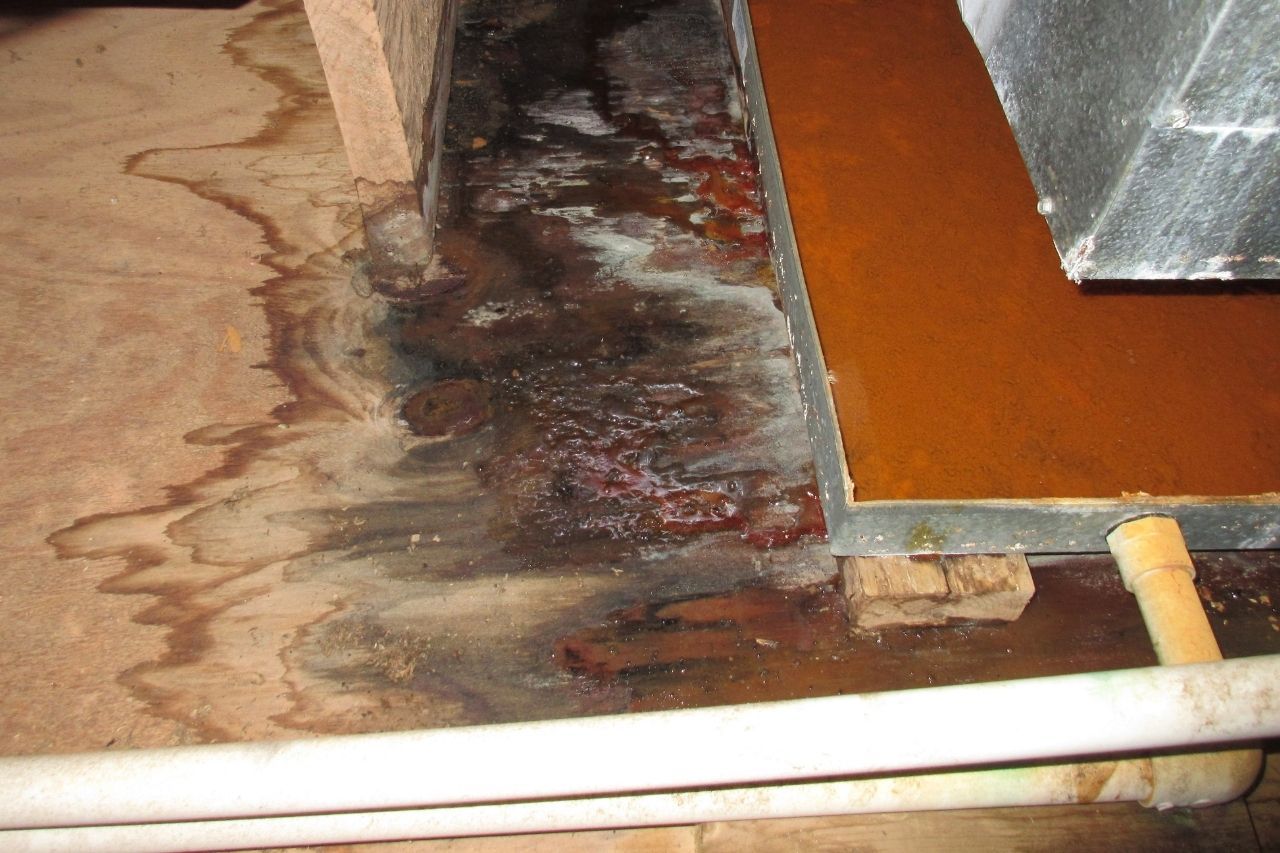
6. Comparing Water Damage Restoration and Mold Remediation
Although interrelated, water damage restoration and mold remediation are distinct processes. Each may trigger different coverage provisions within an insurance policy.
6.1 Water Damage Restoration: Purpose and Process
Objective: Remove water, dry out the structure, and restore the property to its pre-loss state.
Key Steps:
1. Source Control: Identify and stop the water intrusion (e.g., patching a roof, shutting off plumbing). 2. Extraction: Pump or vacuum standing water. 3. Drying and Dehumidification: Industrial dehumidifiers and air movers help achieve acceptable moisture levels in walls, floors, and air space. 4. Cleaning and Sanitizing: Disinfect surfaces to inhibit microbial growth. 5. Restoration / Rebuild: Repair or replace damaged building materials (e.g., drywall, flooring).
Claim Considerations: Insurance policies typically cover “sudden and accidental” water damage. However, coverage can become more complicated if the water event was protracted or due to lack of maintenance.
6.2 Mold Remediation: Purpose and Process
Objective: Eliminate mold colonies, sanitize surfaces, and restore healthy indoor air quality.
Key Steps:
1. Assessment and Testing: A licensed mold assessor determines the extent of mold infestation. 2. Containment: Sealing off contaminated areas to prevent cross-contamination. 3. Air Filtration: Using high-efficiency particulate air (HEPA) filters and negative air pressure systems to capture airborne spores. 4. Removal of Contaminated Materials: Porous materials heavily colonized by mold may need discarding (e.g., drywall, insulation, carpeting). 5. Cleaning and Disinfecting: Using antimicrobial agents on salvageable surfaces. 6. Drying and Post-Remediation Testing: Ensuring moisture levels are controlled and verifying that mold has been remediated successfully.
Claim Considerations: Many standard policies have exclusions or strict sub-limits for mold. Even if the policy covers the original water damage, mold remediation costs may be capped or excluded unless policy endorsements provide additional coverage.
6.3 Timing, Documentation, and Claim Implications
Swift action is paramount in both water restoration and mold remediation. Delay can exacerbate property damage, inflate remediation costs, and trigger insurance coverage disputes. Document every step—photographs, repair invoices, inspection reports—so you can substantiate your claim if the insurer challenges its legitimacy or scope.

7. The Importance of Using a Licensed Mold Assessor in Florida
Florida law (e.g., Fla. Stat. § 468.84 and relevant sections under the Florida Department of Business and Professional Regulation) mandates that individuals or companies conducting mold assessment or remediation must be properly licensed. The rationale is to ensure expertise, professionalism, and consumer protection.
Benefits of Hiring a Licensed Mold Assessor:
1. Accurate Testing & Protocol: A licensed assessor has the requisite training to identify mold species accurately and devise appropriate remediation protocols. 2. Compliance with State Law: Engaging unlicensed individuals can lead to claim complications and potential legal penalties. 3. Credible Documentation: Insurers and courts are more likely to accept findings from a state-licensed assessor than from someone lacking credentials. 4. Conflict of Interest Protections: Under Florida regulations, the same entity typically cannot perform both the assessment and remediation if that leads to a conflict of interest. This separation ensures objectivity in diagnosing the scope of the mold issue.
As a property damage attorney, I recommend policyholders request proof of licensure before hiring any contractor or consultant for mold-related work. This step can help ensure compliance and facilitate a smoother claims process.
8. Practical Steps for Prevention and Rapid Response
Black mold becomes problematic only when conditions favor its growth. By taking proactive measures, homeowners can greatly reduce the risk of mold proliferation and safeguard both health and property values.
1. Routine Inspections:
- Perform seasonal checks of the roof, attic, and plumbing systems. Look for signs of dampness, discoloration, or musty odors. 2. Manage Humidity:
- Keep indoor relative humidity between 30% and 50%. Use dehumidifiers or properly functioning HVAC systems, especially in humid climates like Florida. 3. Immediate Water Damage Mitigation:
- If a leak or flood occurs, act quickly to extract water, remove wet materials, and thoroughly dry affected areas. 4. Seal and Ventilate:
- Ensure that kitchen and bathroom exhaust fans vent properly to the outside, preventing moisture accumulation in interior spaces. 5. Professional Assessments:
- When in doubt, consult with a licensed mold assessor or water damage specialist. Early intervention is almost always less expensive than dealing with widespread mold. 6. Documentation:
- Photograph any damage and keep repair receipts. These records are invaluable should you need to file an insurance claim. 7. Policy Review and Upgrades:
- Consider purchasing additional endorsements to bolster mold coverage if your existing policy has low sub-limits.
9. Legal Strategies for Policyholders
If you suspect mold growth from water intrusion and believe you have a valid claim, here are some legal strategies and considerations:
1. Report the Claim Promptly:
- Failure to provide timely notice may allow the insurer to deny coverage or assert late reporting defenses. 2. Preserve Evidence:
- Take photographs and retain damaged materials (if feasible) until the insurer completes its inspection or advises otherwise. 3. Hire Your Own Experts:
- An independent contractor, engineer, or mold assessor can provide an unbiased report. This can be critical if the insurer’s adjuster downplays the extent or cause of the damage. 4. Demand Clarification of Policy Provisions:
- If the insurer cites an exclusion or limitation, request they identify specific policy language. Insist on a written explanation. 5. Document All Correspondence:
- Keep emails, letters, phone logs, and claim numbers. These can be crucial if a dispute arises. 6. Consider Legal Representation:
- When faced with denials, lowball settlement offers, or protracted delays, hiring an attorney experienced in property damage claims can help level the playing field. Florida law often provides mechanisms (like attorney’s fees and costs recovery under certain statutes) that can incentivize insurers to handle valid claims promptly and fairly.
10. Conclusion
Black mold, while not invariably the dire “toxic” threat it is sometimes portrayed to be, can still pose significant health and structural risks if left unaddressed. In Florida’s climate, water intrusion—be it from a major storm like our hypothetical “Hurricane Milton” or a minor but persistent roof leak—often creates an environment highly conducive to mold proliferation. Prompt identification and remediation are essential, both to prevent potential health issues and to preserve property values.
Legally, mold claims can be intricate. Policy language regarding mold exclusions, sub-limits, and endorsements can heavily influence a homeowner’s ability to secure coverage for remediation. Whether the claim stems from a sudden and accidental water intrusion event or from a more protracted issue, the policyholder’s obligations—prompt notice, mitigation, and thorough documentation—cannot be overstated.
As a property damage attorney who advocates for policyholders, I urge homeowners to:
- Familiarize Themselves with Their Insurance Policies. Carefully review your coverage for water damage and mold.
- Take Preventive Measures. Regular inspections, immediate fixes for leaks, and humidity control can minimize the risk of mold.
- Act Decisively when Damage Occurs. Engage licensed professionals for water extraction and mold assessment.
- Seek Legal Counsel If Necessary. If your claim is unjustly delayed, underpaid, or denied, an attorney can help you assert your rights under Florida law.
Ultimately, the key lies in vigilance and knowledge. Mold thrives on neglect and hidden moisture. By staying proactive, documenting everything, and understanding the legal landscape, you can protect your property and ensure a smoother path to recovery when water and mold damage do occur.
11. References
- Cleveland Clinic. Black Mold. Last reviewed on 03/31/2023. Link to Cleveland Clinic’s article on black mold. 2. Florida Statutes:
- Fla. Stat. § 468.84 (et seq.): Mold-Related Services Licensing Act, governing licensing requirements for mold assessors and remediators.
- Florida Department of Business & Professional Regulation (DBPR): Mold-Related Services Licensing Program 3. Insurance Policy Forms:
- HO-3: Special Form Homeowners Policy (commonly used for single-family homes).
- HO-5: Comprehensive Form (similar to HO-3 but broader coverage in some cases).
How it Works
No Win, No Fee
We like to simplify our intake process. From submitting your claim to finalizing your case, our streamlined approach ensures a hassle-free experience. Our legal team is dedicated to making this process as efficient and straightforward as possible.
You can expect transparent communication, prompt updates, and a commitment to achieving the best possible outcome for your case.
Free Case EvaluationLet's get in touch
We like to simplify our intake process. From submitting your claim to finalizing your case, our streamlined approach ensures a hassle-free experience. Our legal team is dedicated to making this process as efficient and straightforward as possible.
290 NW 165th Street, Suite M-500, Miami, FL 33169
